Review: Eachine TX805S long range VTX
Introduction
Eachine probably has the largest range of various FPV video transmitters. Ranging from nano sized Eachine Nano VTX to long range Eachine TX806. One of the most popular VTX is Eachine TX805 (Read the review of Eachine TX805 VTX here ). It is stack mountable VTX with high power output. Recently Eachine released the newer version TX805S with even more power output – up to 1600mW!
Eachine TX805S specifications:
Features:
* Support 0.01mw Parameter-adjusting Mode.
* 25mW, 500mW, 1000mW and 1600mW power switchable.
* One button frequency and power setup.
* OSD configuration using smart audio.
* Onboard mic.
Inside the box there is the TX805S itself, MMCX to SMA pigtail, MMCX linear antenna and the instructions leaflet.
There is a large heatsink on the top PCB side. We can expect it heating up greatly as it needs additional heatsink.
Closer view of the back side of the PCB.
There is a channel/band/power change button and MMCX antenna socket.
Leaflet provides basic info and the basic operation instructions for manual channel/band/power selection.
Weight of the TX805S is 10.3 grams with wires. You can shave about 0.5 gram if you will strip the connectors and shorten the wires.
Weight of the antenna pigtail.
Button control channel, band and power select
Red LED lights on for 25mW. For 500mW, Green LED lights on. For 1000mW Blue LED lights on. Press the button again and Red LED,Green LED and Blue LED lights together, representing the highest power 1600mW.
Pit Mode(0.01mW)
While in Pit Mode you can change channels and set power levels, but none of these changes will take effect until you quit Pit Mode. By default, Pit Mode will send a very weak signal
Power output measurements
The TX805S was connected to the immersion RF power meter V2 for power output test. VTX was actively cooled with fan while taking the measurements. Measurements were made on Raceband CH5 (5806 MHz). Using the included antenna SMA pigtail.
First test: 25mW output setting. In the reality it is outputting 34 mW (15.36dBm).
Next step 500mW – outputs less than expected 407 mW (26.09 dBm).
At 1000mW setting it outputs only 537 mW (27.3 dBm)
And at the max setting of 1600mW it outputs only 872.41 mW (29.41d Bm)
Tested the 1000mW setting without cooling and it drops from 537 mW down to 381 mW (25.8 dBm) after a few minutes.
Also the 1600mw setting without cooling drops from 872 mW down to about 559 mW (27.5 dBm) after a few minutes.
And after that it overheats and turns off. The RF power output drops to “zero”. VTX is extremely hot.
The power output test results were disappointing at 1000mW and 1600mW power setting – actual power output is almost twice lower than expected.
Here is the RF power output and electrical current consumption for all power levels. Measured at Raceband, CH5.
Power output vs frequency for 25mW power level on Raceband.
Power output vs frequency for 500mW power level on Raceband.
Power output vs frequency for 1000mW power level on Raceband.
Power output vs frequency for 1600mW power level on Raceband.
As you can see maximum power output can be achieved on he lower frequency bands. Power output ranges from 42mW down to 24mW for 25mW setting and from 1023mW down to 724mW on the 1600mW power output setting. There are similar deviations on the other power output settings. You should have this in mind when selecting the channel/band for FPV feed – it outputs the more power on the lower frequencies and less power on the higher frequencies.
Smart Audio feature
[To be tested]
PROS
- Smart Audio control
- Pit mode/25/500/1000/1600mW switchable power modes
- On board microphone
CONS
- Output RF power is lower than nominal
- Bulky, because of the added heatsink
- Heats up greatly, needs active cooling
- Can overheat in the max power mode
CONCLUSION
Eachine TX805S is “more powerful” version of the Eachine TX805. More power output means more heating, thus it has heatsink added. Despite the added heatsink it can easily overheat and shut down the RF output if not cooled actively with enough airflow. You shouldn’t burry this VTX deep inside your aircraft, better stick it on the outside where it could be cooled actively.
The power output tests show that the emitted power does not correspond to the nominal values and in fact it is much lower as it should be (max 614mW @ 1000mW setting and max 1023mW @ 1600mW setting). But it is significantly more than its predecessor Eachine TX805.
If you are looking for long range VTX, I would recommend the Eachine Leaf TX806. During the power output tests it overpowered TX805S, outputing max 1288mW and maintaining the stable power output even without active cooling.
Available @ Banggood: https://www.banggood.com/Eachine-TX805S-5_8GHz-40CH-2550010001600mW-AV-FPV-Transmitter-VTX-LED-Display-With-Mic-Heatsink-Support-OSDPitmodeSmart-Audio-for-RC-Drone-Airplane-Long-Range-p-1495313.html
Disclaimer: This item was supplied by Banggood for a fair and unbiased review. Banggood never asked for a positive review and never influenced my opinion in any way. I’m trying my best to stay uninfluenced and give only my own opinion. All affiliate links if there are any help me purchase items for future reviews.
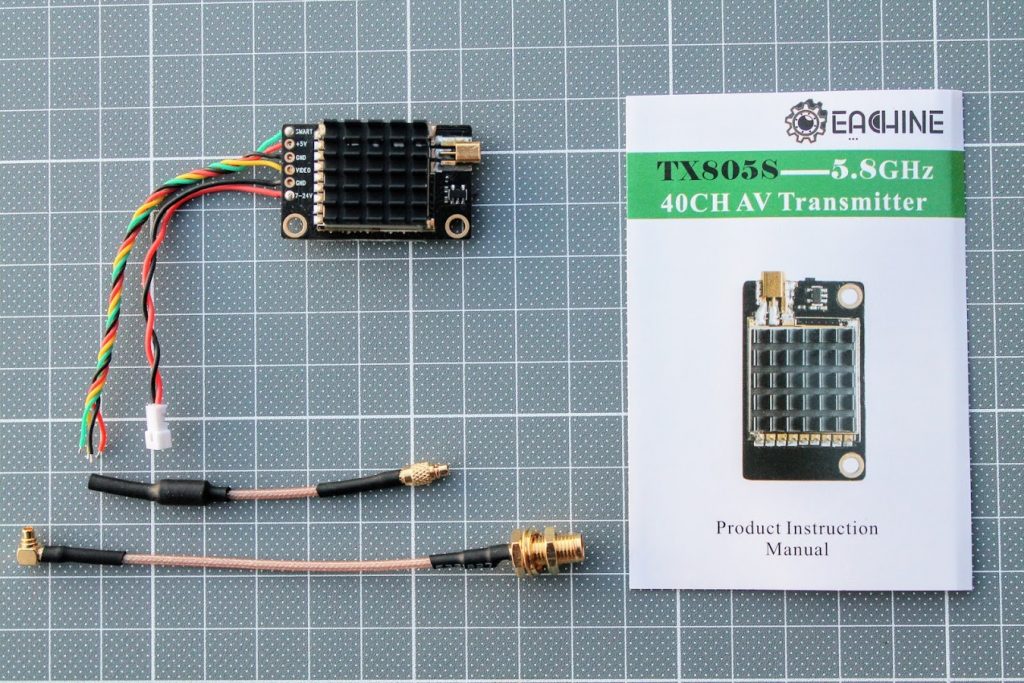
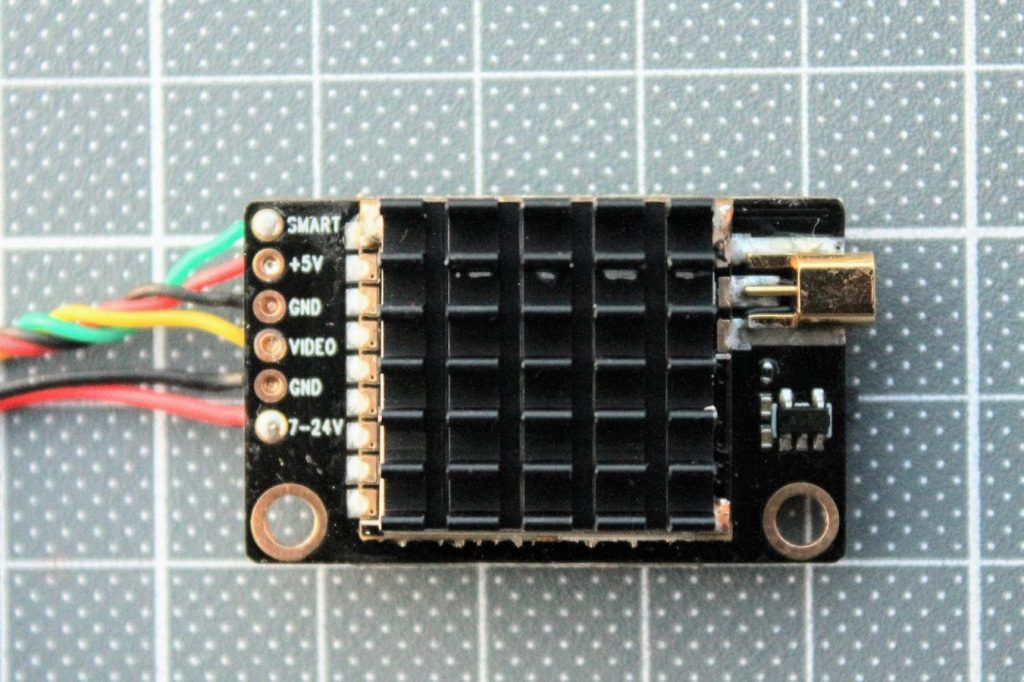
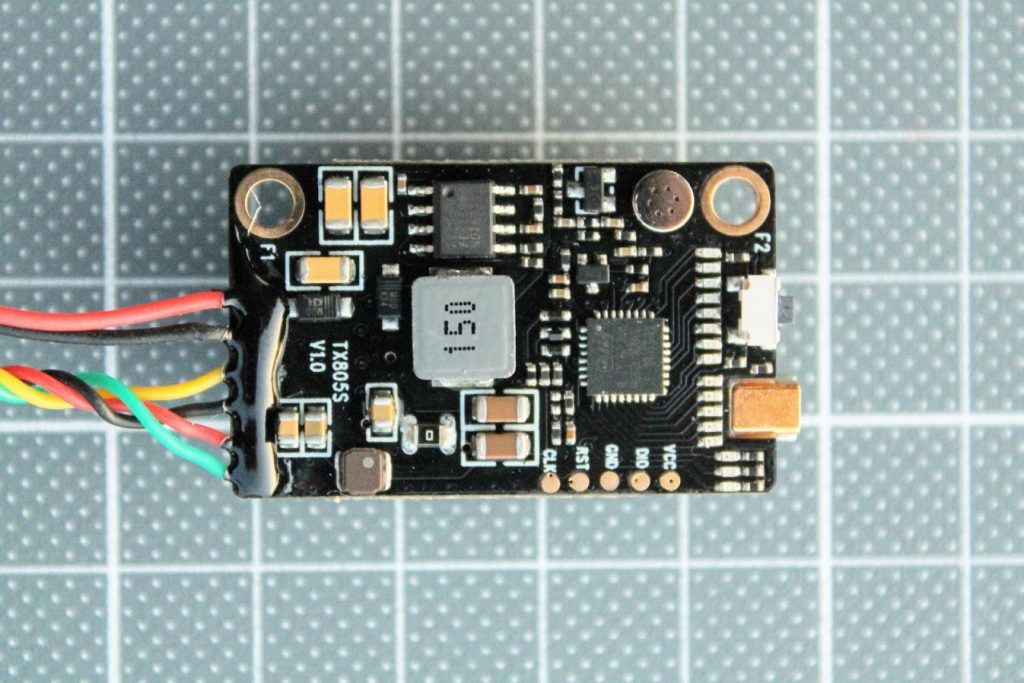
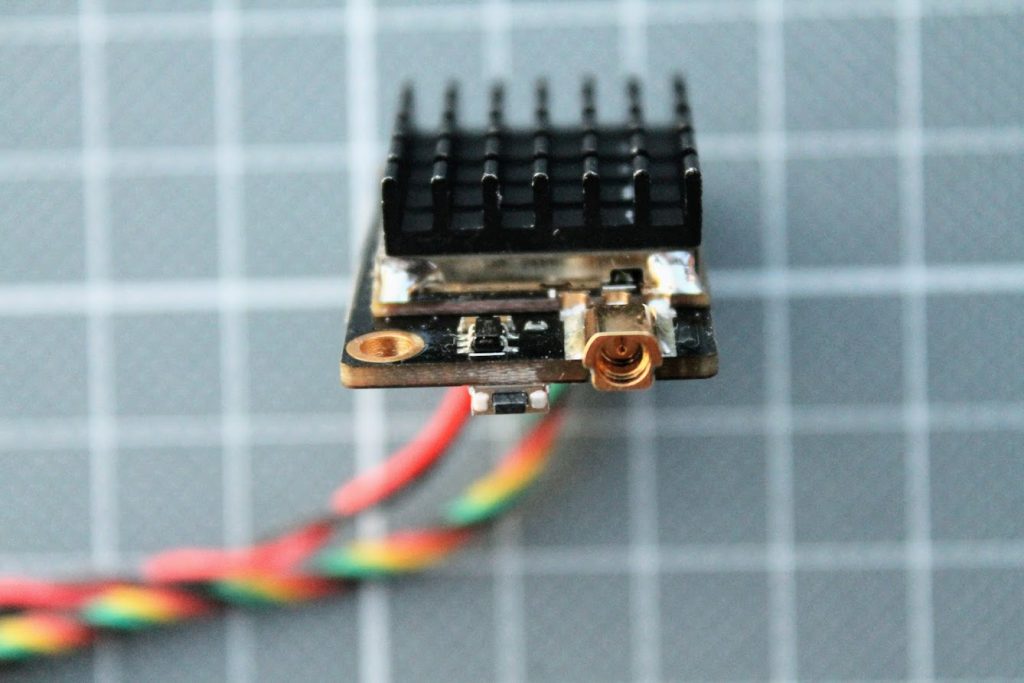
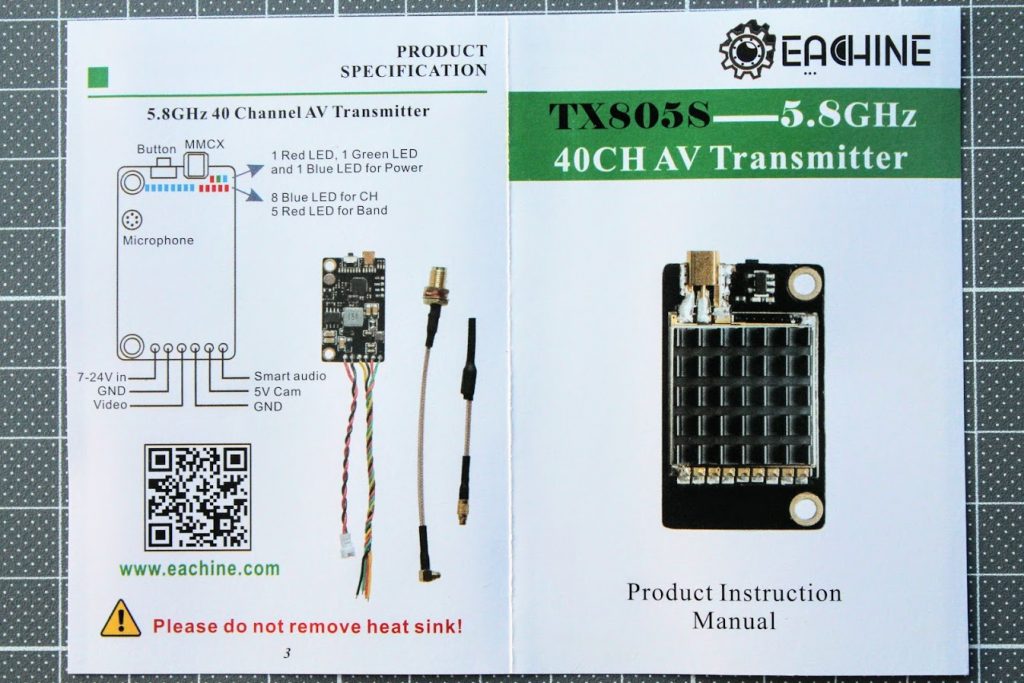
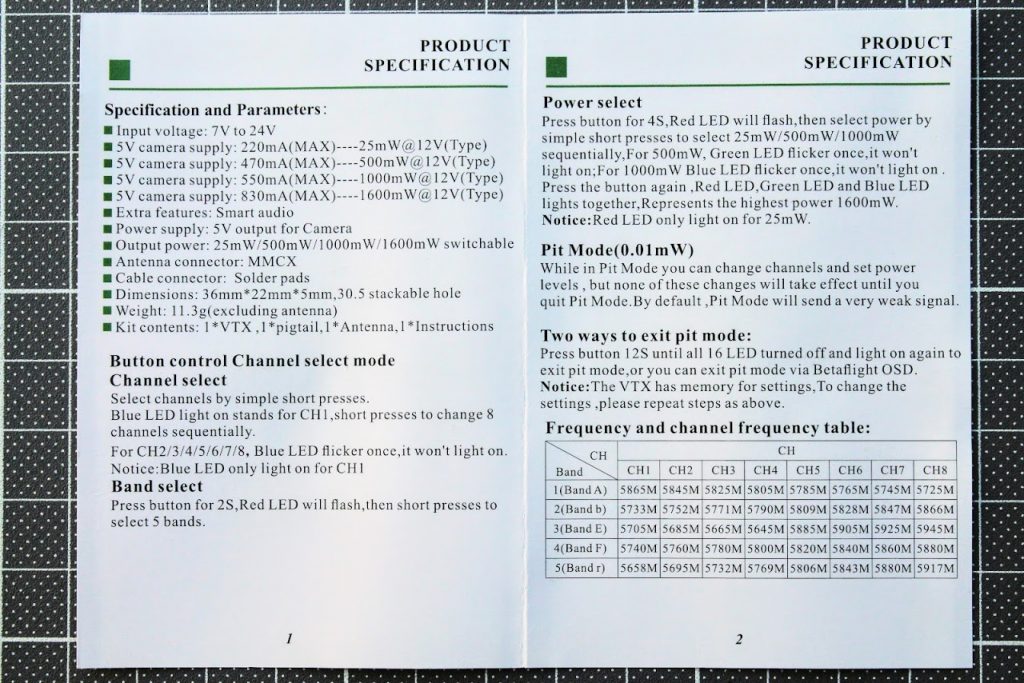
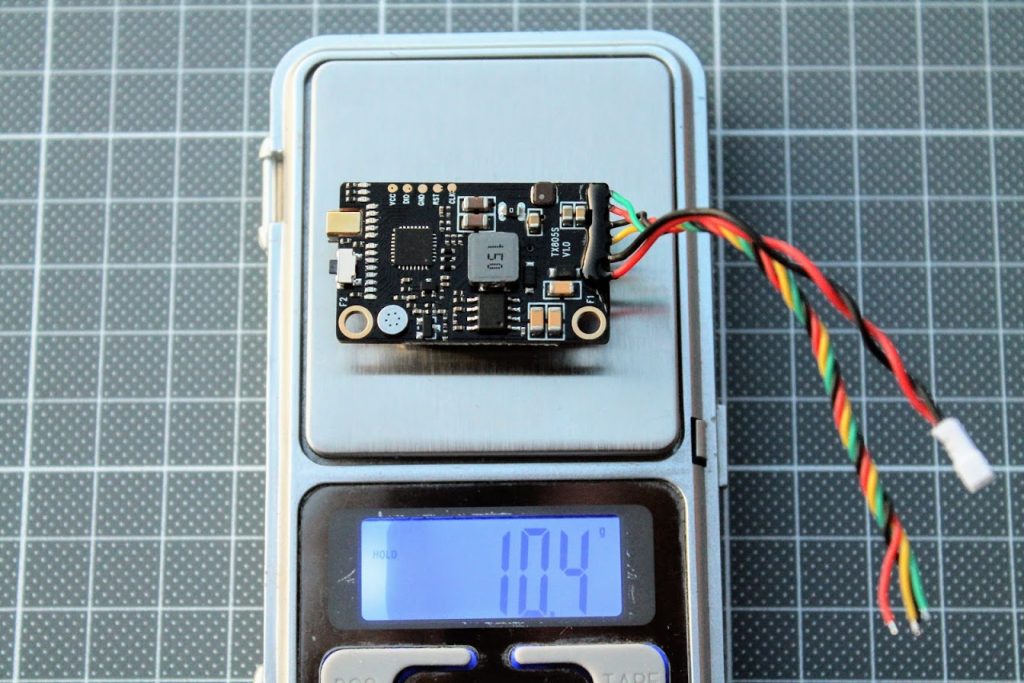
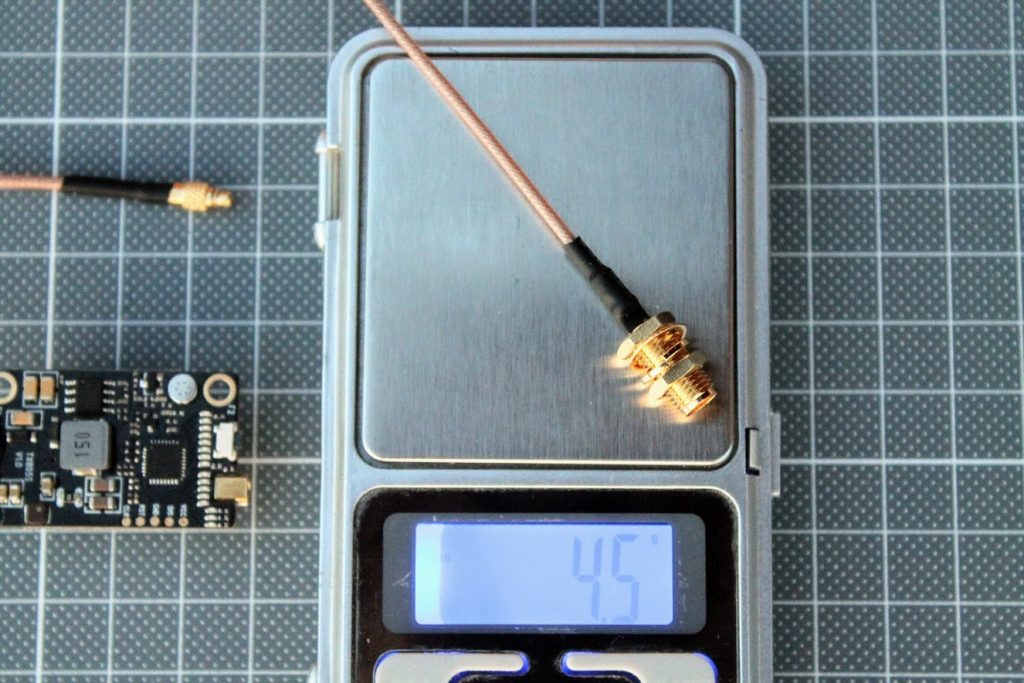
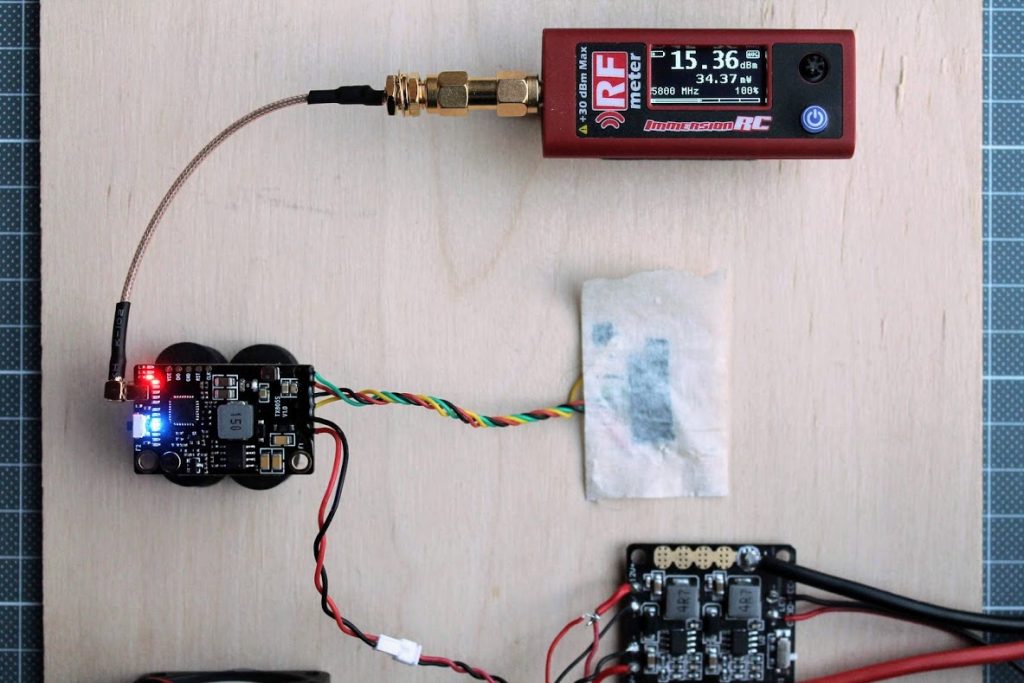
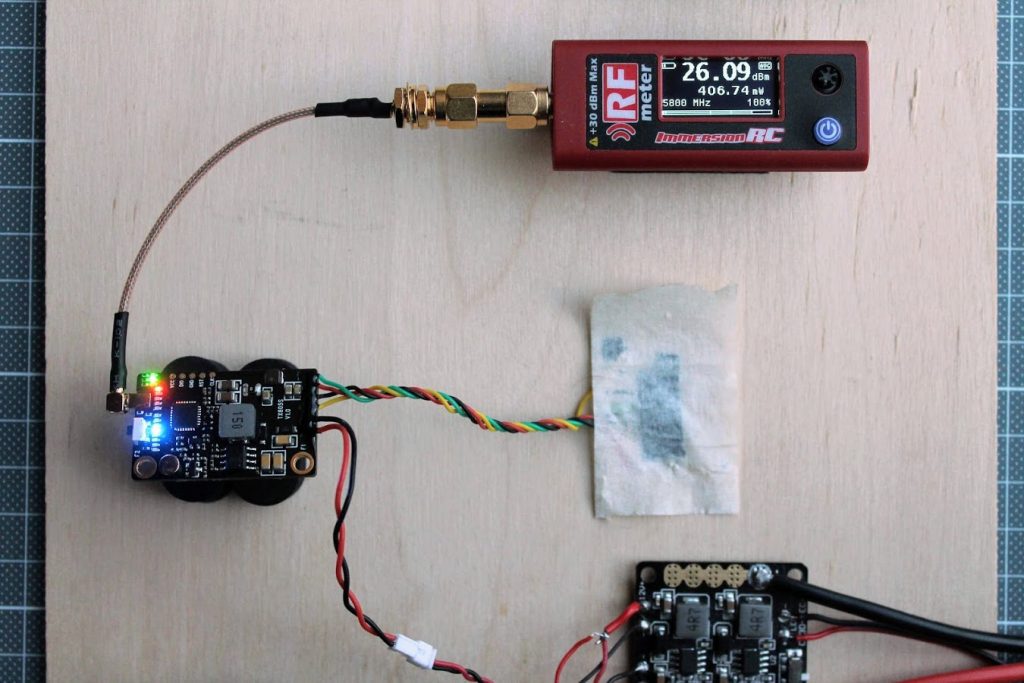
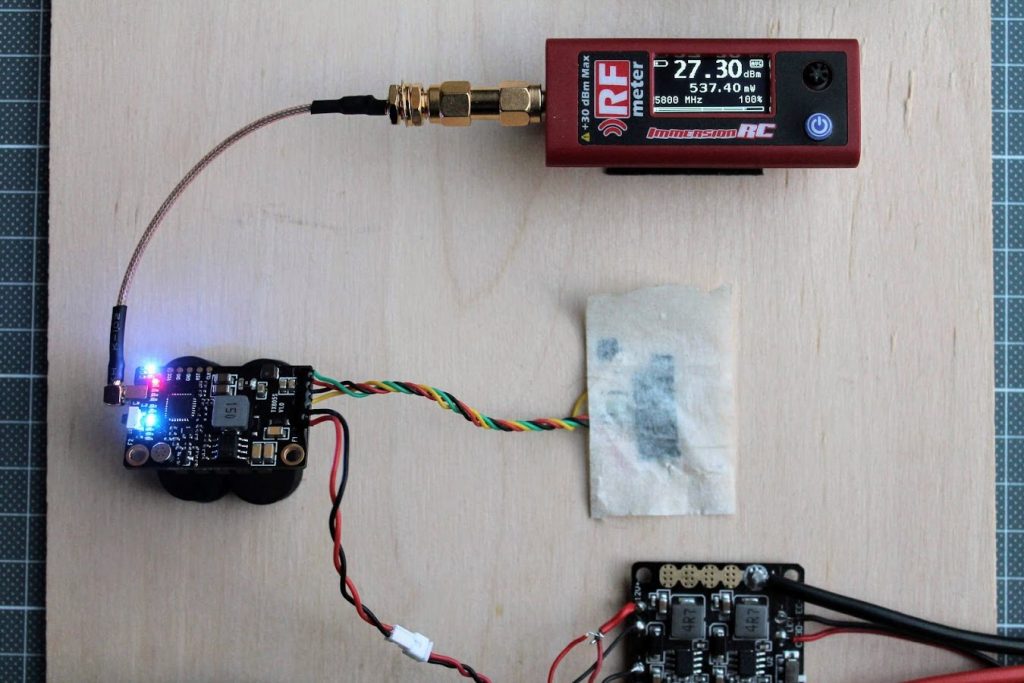
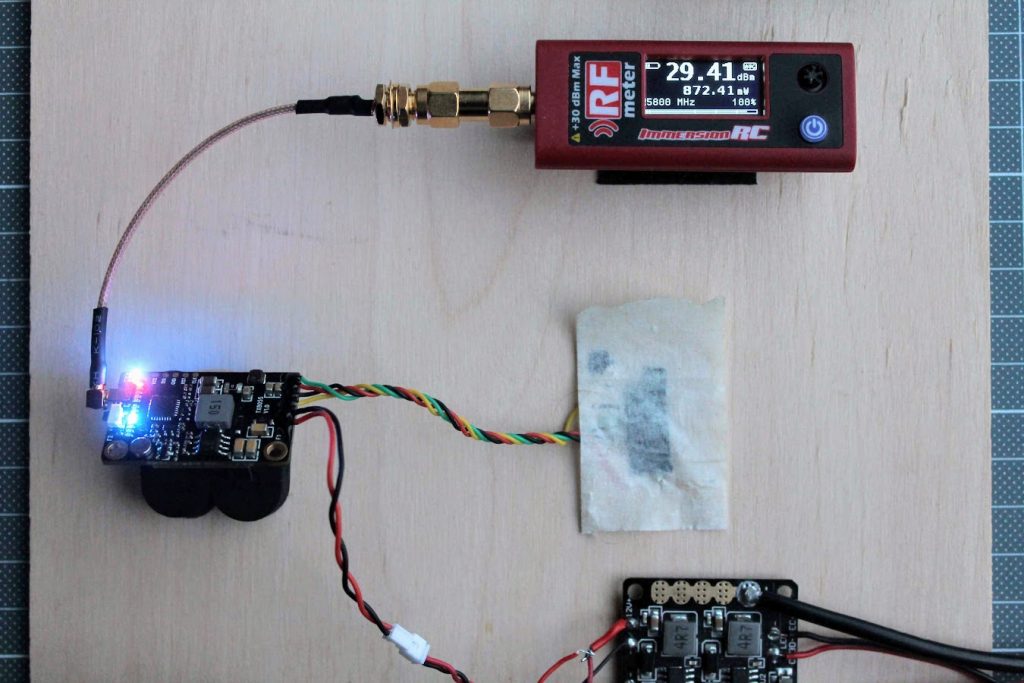
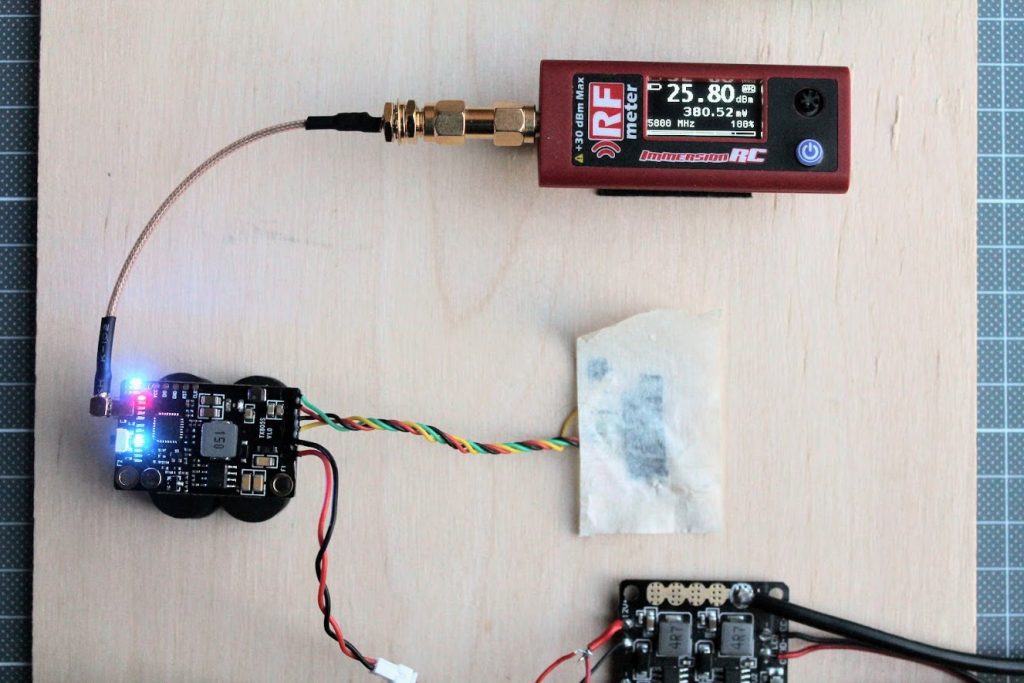
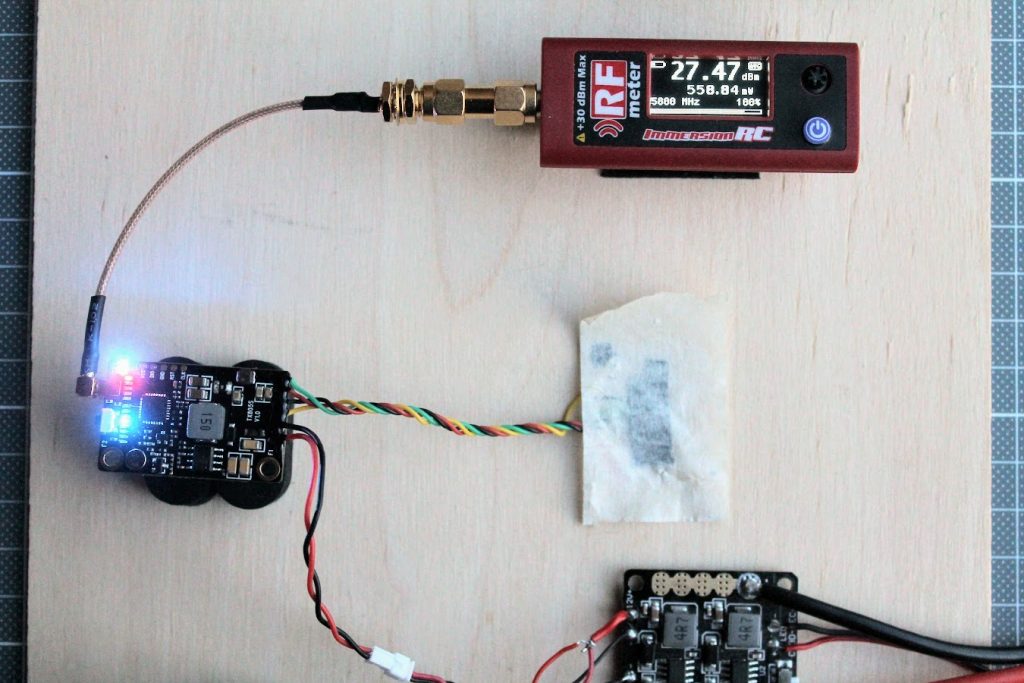
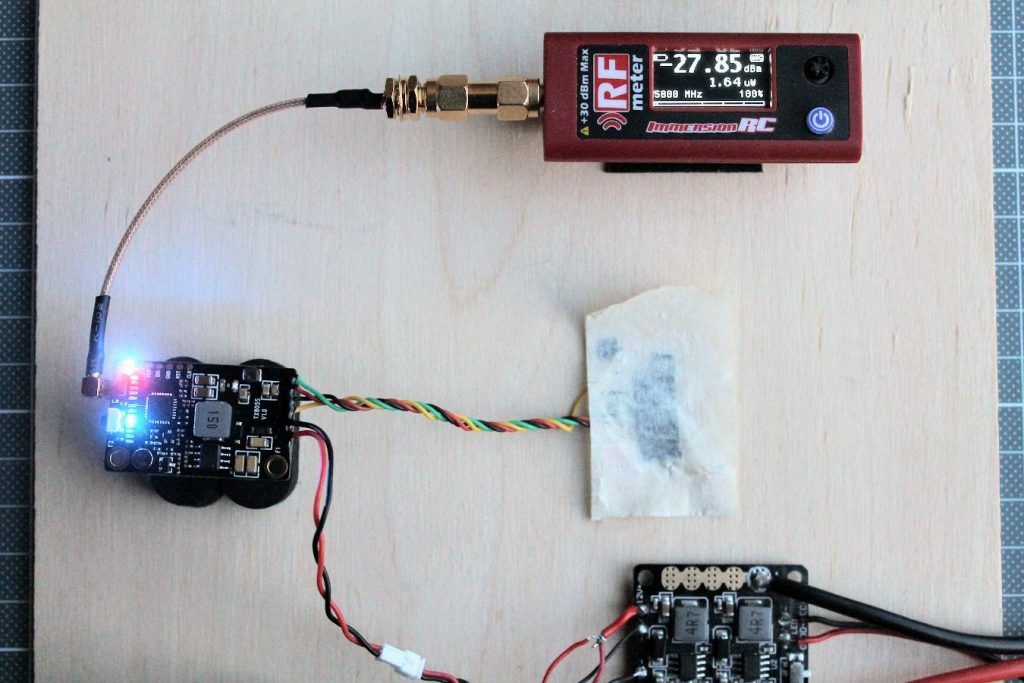
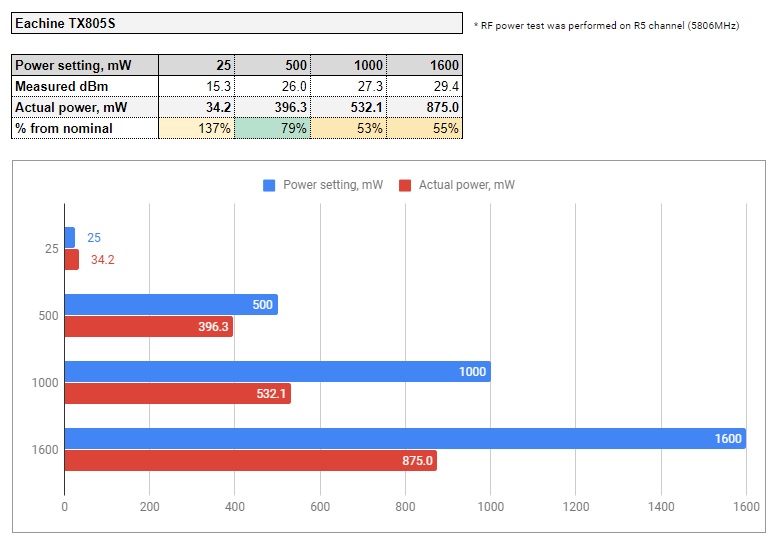
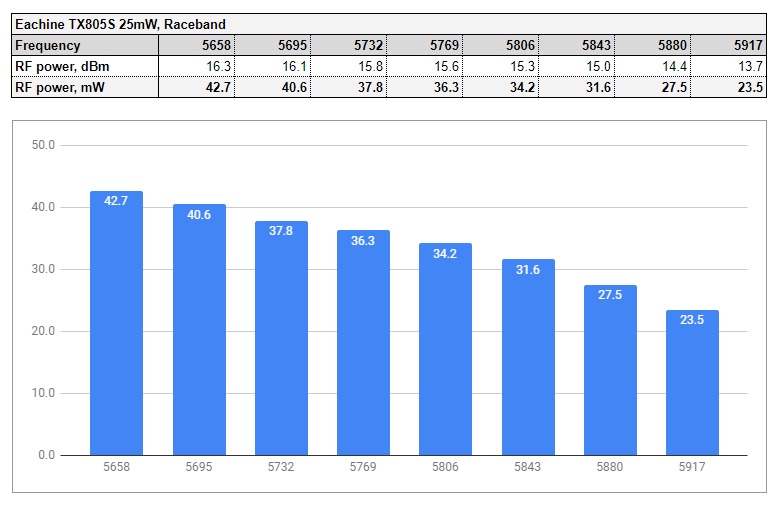
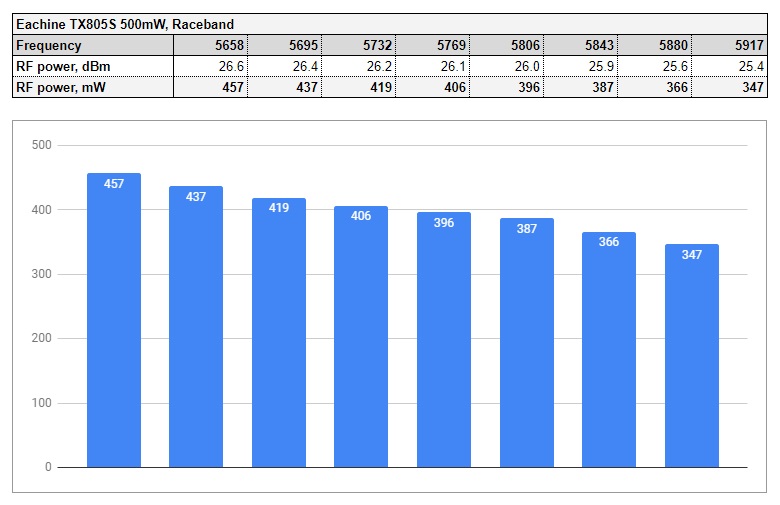
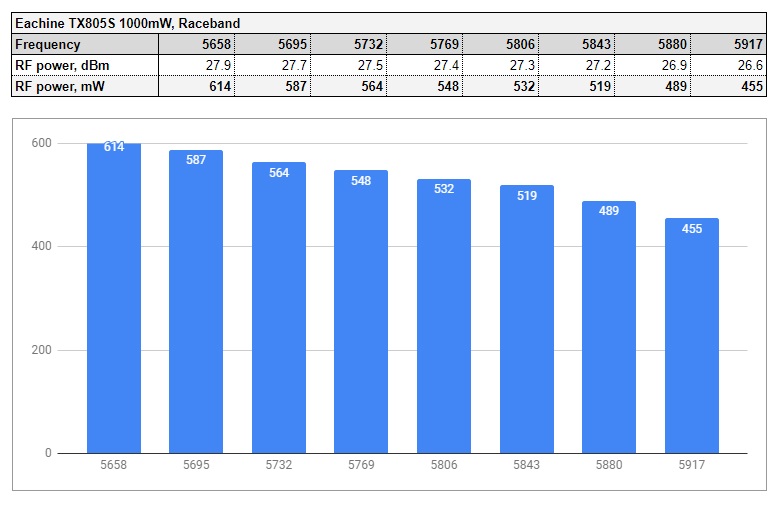
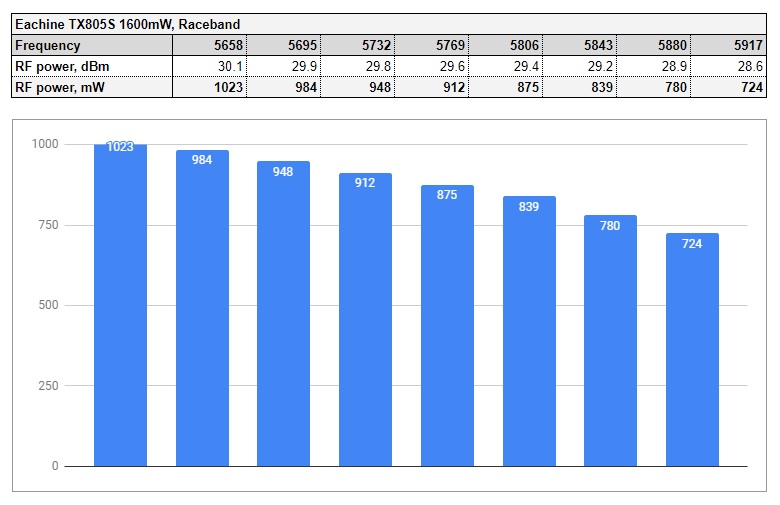


Yeah seriously these VTX review tests are great. Keep up the wonderful work you do 🙂 are there other vtx tested in this way on here somewhere? and thank you!
Thanks, I’m really happy you find them useful! You can look at the all VTX’s I’ve tested here: http://www.multirotorguide.com/?s=Review+VTX. I’ve tested about 17 VTX’s so far. And a dozen waiting to be tested 🙂 .
Do you remember what voltage you were supplying the VTX with? Some of this class of transmitters regulate the incoming wide range voltage down to 5V for the camera, and then run the transmitter module off that same voltage. To get the higher output power levels either the voltage has to go up or the current does – and perhaps at 5V it is just running out of supply current at the DC/DC converter output. Note that the spec says 12V, but if you ran the test with a 2S input (allowable given the 7-26v input range) the converter would have to work a lot harder to put out the extra wattage.
All the tested VTX’s are supplied with +12V voltage (except the ones that require +5V voltage input). Voltage drop on the input is less than 0.5V on the maximum RF power output. So the VTX has enough voltage supplied. The TX805S VTX overheats very quickly and then shuts down.
The low power output can be due to the poor pigtail quality, defective item, but these test results are real. I always use the pigtail, supplied in the package, to get the real world data. I assume that you would use the same pigtail that comes in the package. If I got bad/defective item or poor quality pigtail, that means you could get the same problem.
Bottom-line: I don’t recommend this VTX based on my test results.